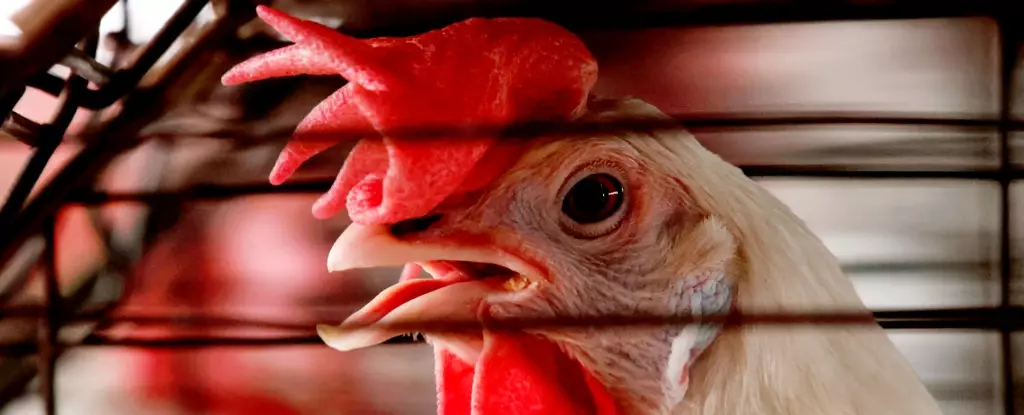The avian influenza virus, particularly the H5N1 strain, has long been a concern for public health officials. Recent developments have elevated this concern to new heights, prompting experts to warn about the possible emergence of a pandemic, considering the virus’s increased spread among various animal species, including dairy cows in the United States. Although the Centers for Disease Control and Prevention (CDC) and other health authorities maintain that the risk of widespread human transmission remains low, the unsettling trajectory of this virus leaves much to ponder regarding our preparedness and response capabilities.
The H5N1 strain of bird flu was first identified in 1996 in China, primarily affecting poultry. Over the years, it has exhibited a concerning pattern of spread, reaching areas that were previously untouched, such as Antarctica. The World Organisation for Animal Health reports staggering figures, revealing that over 300 million poultry birds have been culled since late 2021, and 315 species of wild birds have succumbed to the virus across 79 countries. This unprecedented situation has not only devastated avian populations but has also extended to mammals—particularly those that prey on infected birds—raising alarms about the ecological and health implications of this virus.
Moreover, the recent spread of H5N1 among dairy cows is particularly alarming. The emergence of mammalian infections raises the concern of the virus adapting to new hosts, creating greater opportunities for mutation and transmission. Health officials have recorded 58 human cases of bird flu in the U.S. this year, with some cases appearing in individuals who had no known exposure to infected animals. This raises significant questions about the adequacy of current surveillance and detection measures.
A crucial factor in understanding the pandemic potential of H5N1 is its ability to mutate. Recent research indicates that the strain infecting U.S. cows might only require one further mutation to enhance its capacity for human transmission. Virologists like Ed Hutchinson have outlined this precarious situation, suggesting that the virus is merely a “simple step” away from achieving a more direct human transmission pathway. Moreover, genetic sequencing of a Canadian teenager who contracted a severe form of the virus hints at its evolution for better binding to human cells.
The more the virus circulates among various species, the higher the probability it will adapt to human receptors, leading experts like epidemiologist Meg Schaeffer to claim that “avian flu is knocking on our door.” Such statements underscore the critical need for heightened vigilance as we look not only at the current infection rate among farm workers but also the potential long-term implications should the virus become more adept at infecting humans.
Despite the ongoing spread of H5N1 and its potential for severe illness, there remains a layer of discretion when evaluating the immediate risk to the general population. Tom Peacock, a virologist at Imperial College London, has pointed out some reasons for cautious optimism: antiviral treatments and vaccines are already in existence for bird flu, differing significantly from the situation encountered during the onset of COVID-19. Yet, we cannot underestimate the challenges ahead.
Historical data reveal that nearly half of the 904 human cases of H5N1 recorded since 2003 have resulted in fatalities, highlighting the potential severity of an H5N1 outbreak among humans, especially given our lack of pre-existing immunity. Furthermore, concerns about undetected human cases proliferate when observing the infection rates among dairy workers, which could point to a much larger problem lurking beneath the surface.
In proactive response to the evolving situation, many health researchers advocate for a robust approach to testing and inter-agency communication. The recent announcement by the U.S. Department of Agriculture regarding plans to test the milk supply for bird flu is a step in the right direction. This initiative shines a light on the need for stringent measures concerning raw or unpasteurized milk, historically linked to contamination.
To mitigate the risk of an H5N1 pandemic, it is essential to bolster surveillance systems, improve testing capabilities, and facilitate cooperation at both national and international levels. By adopting a more vigilant approach, we can better prepare to tackle the complexities of avian influenza and protect public health.
The threat posed by bird flu requires serious attention and action. While the immediate risk to the general public remains low, the evolving nature of H5N1 signifies that extensive monitoring, research, and preparedness measures are crucial in averting a potential health catastrophe. As experts suggest, vigilance today may be the linchpin that secures our tomorrow.

